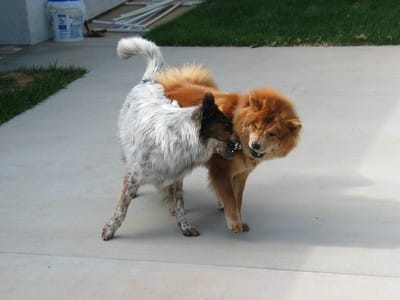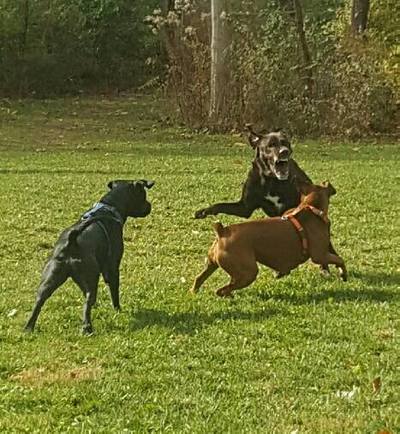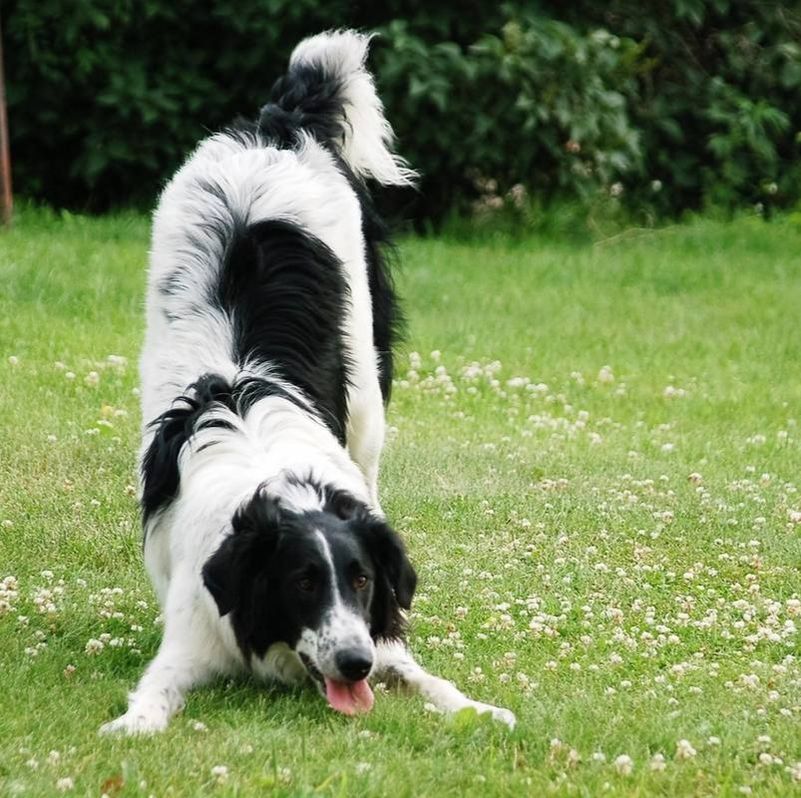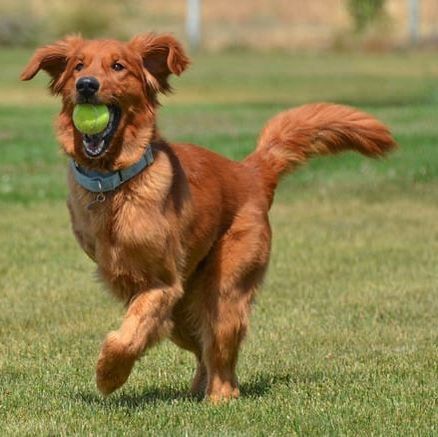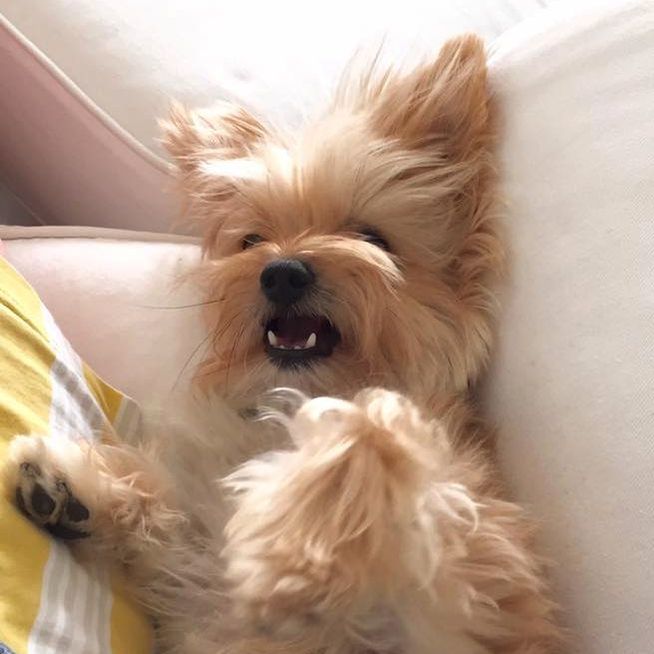Play Behavior
It’s true that dogs can have a lot of fun roughhousing with each other. But play is way more important to dogs than many of us realize.
Play gives dogs the chance to practice their manners and keep their social skills polished. As puppies, it’s believed they learn the lifelong skill of biting softly through play! Basically, all of the important behaviors dogs need to survive as a species are expressed through:
Play gives dogs the chance to practice their manners and keep their social skills polished. As puppies, it’s believed they learn the lifelong skill of biting softly through play! Basically, all of the important behaviors dogs need to survive as a species are expressed through:
Dogs take turns mouthing each other’s faces and necks, jumping on top of one another, chasing and running away, and, yes, even mounting and humping each other. |
At a single glance, play looks just like the real thing. Dogs even growl, snap, and bare their teeth when they are playing. Take a look at these two pictures. Can you tell if the dogs are playing or fighting?
You can guess, but without more information, there's no way to know for sure. So how can you tell if the dogs are having fun or not? Look for the following:
- Self-handicapping
- Role reversals
- Meta-signals
Self-handicapping
|
Basically, dogs pull their punches when they play. Most could easily bite through bones, but when they’re playing, they mimic biting by keeping their mouths open. It’s the same with body slamming.
Watch Jook and Lola in this video to see self-handicapping in action. A Pug taking down a Rottie! What'll they think of next?!? |
Role Reversals
|
Dogs actively switch between “giver” and “receiver” when they’re playing: the chaser becomes the chasee, the dog on top becomes the dog on the bottom, and the dog “biting” become the dog being “bitten.”
The two little guys in this video do a great job shifting roles. |
|
Meta-signals
|
Because play behaviors look identical to the real thing, dogs use meta-signals before and after play fighting, biting, etc., to tell the other dog that it’s all just in fun.
Which meta-signals listed below do you see Canela doing in this video? |

